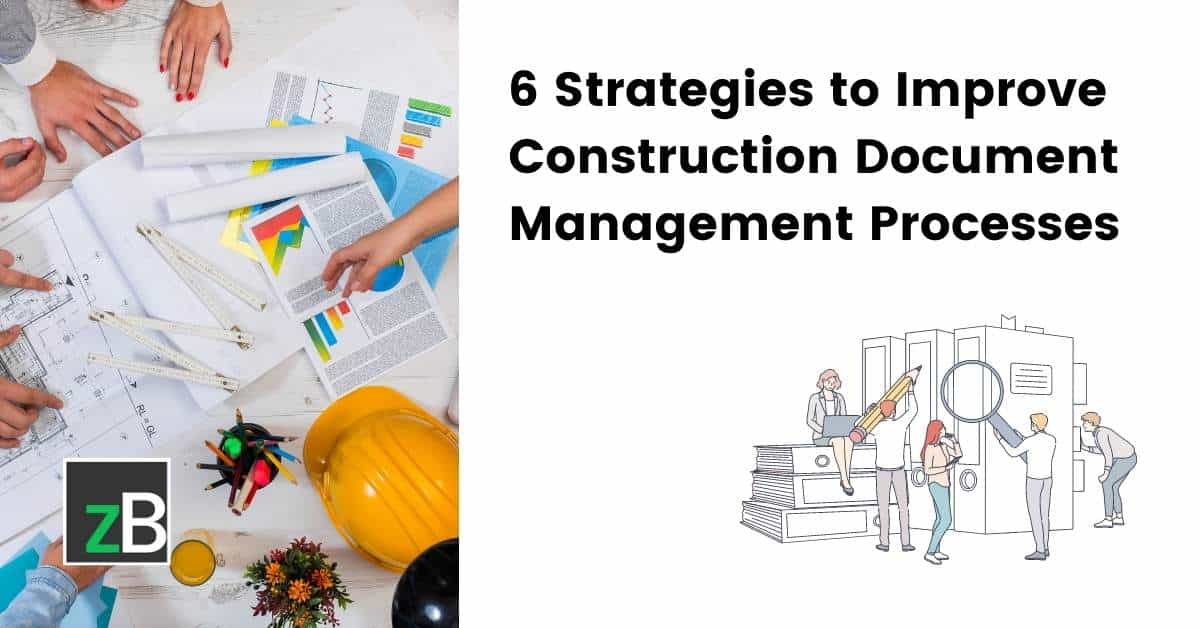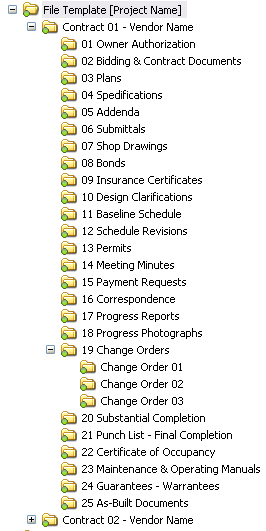Architect's Guide to Simplifying Building And Construction Document Administration for Effective Task Execution
In the complex globe of architecture and building, the effective administration of task documents stands as a cornerstone for success. Designers are entrusted with managing a myriad of illustrations, records, requirements, and agreements, all vital elements for bringing a job to fruition. The procedure of arranging, sharing, and keeping these records can usually become a labyrinth of inadequacies and problems if not dealt with carefully. By exploring organized approaches, cutting-edge devices, and market best practices, engineers can not only streamline their paper management processes yet additionally lead the means for extra reliable job execution. Allow's navigate with the key techniques and solutions that can transform how architects handle building paperwork, ensuring jobs are supplied with precision and timeliness.
Relevance of Effective Record Management
Reliable paper administration is important for architects in the building and construction sector as it plays a critical function in guaranteeing the effective implementation of projects. Correct organization and monitoring of these files are important to maintain task timelines, ensure compliance with guidelines, and help with reliable communication among job stakeholders.

Effective document monitoring enables designers to access critical information promptly, track project progression precisely, and minimize threats linked with errors or omissions. By applying structured file monitoring procedures, engineers can improve collaboration with clients, specialists, and various other team members, leading to enhanced job results and client satisfaction.
Moreover, reliable file administration helps engineers preserve an extensive project background, allowing them to take advantage of past experiences and lessons learned for future jobs. In today's fast-paced building and construction sector, where timely decision-making and information sharing are vital, efficient record administration is a foundation for success.
Strategies for Enhancing File Company
Efficient document monitoring methods not just guarantee task success for designers in the construction sector but additionally lay the foundation for implementing methods for enhancing file company. To streamline paper company efficiently, engineers ought to initially develop a clear naming convention for data and folders. Consistency in calling files based on job stages, document kinds, and relevant information will certainly promote easy retrieval and lower confusion.
Making use of cloud-based storage space remedies can additionally boost document organization by providing a centralized location for all project-related files - construction document management. This enables employee to access the most updated files from anywhere, promoting partnership and performance. Applying variation control systems additionally fine-tunes paper company by tracking modifications, stopping conflicting edits, and making certain that the latest versions are always available
Moreover, developing a sensible folder framework with assigned subfolders for different document categories, such as agreements, specs, and drawings, can streamline record administration processes. Frequently evaluating and removing redundant or obsolete files will certainly help keep a lean and well organized record repository, inevitably improving productivity and job end results.
Leveraging Innovation Equipment for Cooperation
In the realm of contemporary design, architects are increasingly depending on innovative technology devices to promote smooth cooperation among project stakeholders. Leveraging modern technology for collaboration streamlines communication, improves effectiveness, and boosts total task outcomes. Cloud-based systems such as BIM 360 and Procore try these out allow real-time access to task papers, enabling contractors, designers, and customers to collaborate properly regardless of their physical place. These devices promote concurrent modifying, variation control, and instantaneous updates, decreasing mistakes and delays triggered by miscommunications.
Online layout and building (VDC) software program like Revit and AutoCAD Style enable architects to develop detailed 3D versions that can be shared and modified collaboratively. This real-time collaboration boosts style visualization, control, and accuracy, leading to better decision-making throughout the job lifecycle. Furthermore, interaction devices like Slack and Microsoft great post to read Teams give immediate messaging, file sharing, and video conferencing abilities, cultivating smooth interaction among staff member and stakeholders.
Guaranteeing Accuracy and Version Control

Efficient variation control also aids in managing record approvals and making certain that just accredited workers make modifications. Engineers ought to establish clear procedures for recording adjustments, including timestamps and individual recognition, to produce an audit trail for responsibility. Routinely communicating with the project group regarding version updates and modifications is necessary to avoid confusion and keep alignment throughout the building and construction procedure.
Ideal Practices for Record Sharing and Accessibility
Having actually established a durable system for version control in building file administration, designers can currently focus on enhancing document sharing and access methods to boost cooperation and performance amongst task stakeholders. These systems use real-time access to job files, allowing team participants to view, modify, and comment on data concurrently.
Furthermore, executing role-based gain access to control is important for maintaining data protection while promoting collaboration. Appointing various consent levels to employee makes sure that sensitive information is just easily accessible to licensed employees. Regularly upgrading accessibility authorizations based on task demands and team modifications is critical for preserving data honesty.
Integrating task administration software application with document sharing systems can also simplify workflows. This assimilation permits seamless interaction, task monitoring, and document visit here administration within a solitary user interface, decreasing the need to change between several devices. By adhering to these finest practices, designers can develop a more reliable and joint record sharing environment, eventually leading to effective project execution.

Verdict
To conclude, effective construction file management is crucial for effective job execution. By carrying out approaches for organization, leveraging technology devices for partnership, ensuring precision and version control, as well as adhering to finest practices for record sharing and gain access to, architects can streamline their operations and enhance overall job efficiency. Focusing on these aspects of file administration will certainly result in smoother project execution and far better outcomes for all stakeholders entailed.
Effective document administration is vital for engineers in the building and construction sector as it plays a critical duty in guaranteeing the effective execution of jobs. construction document management. Correct company and administration of these records are critical to maintain job timelines, ensure conformity with policies, and assist in reliable communication among task stakeholders
Efficient paper management practices not only make certain project success for designers in the building and construction sector but also lay the structure for executing approaches for streamlining paper company. One vital technique is establishing a centralized paper database where all team members can access the newest versions of illustrations, requirements, and various other project files.Having established a durable system for variation control in construction file monitoring, designers can now focus on enhancing record sharing and gain access to approaches to boost cooperation and efficiency amongst task stakeholders.